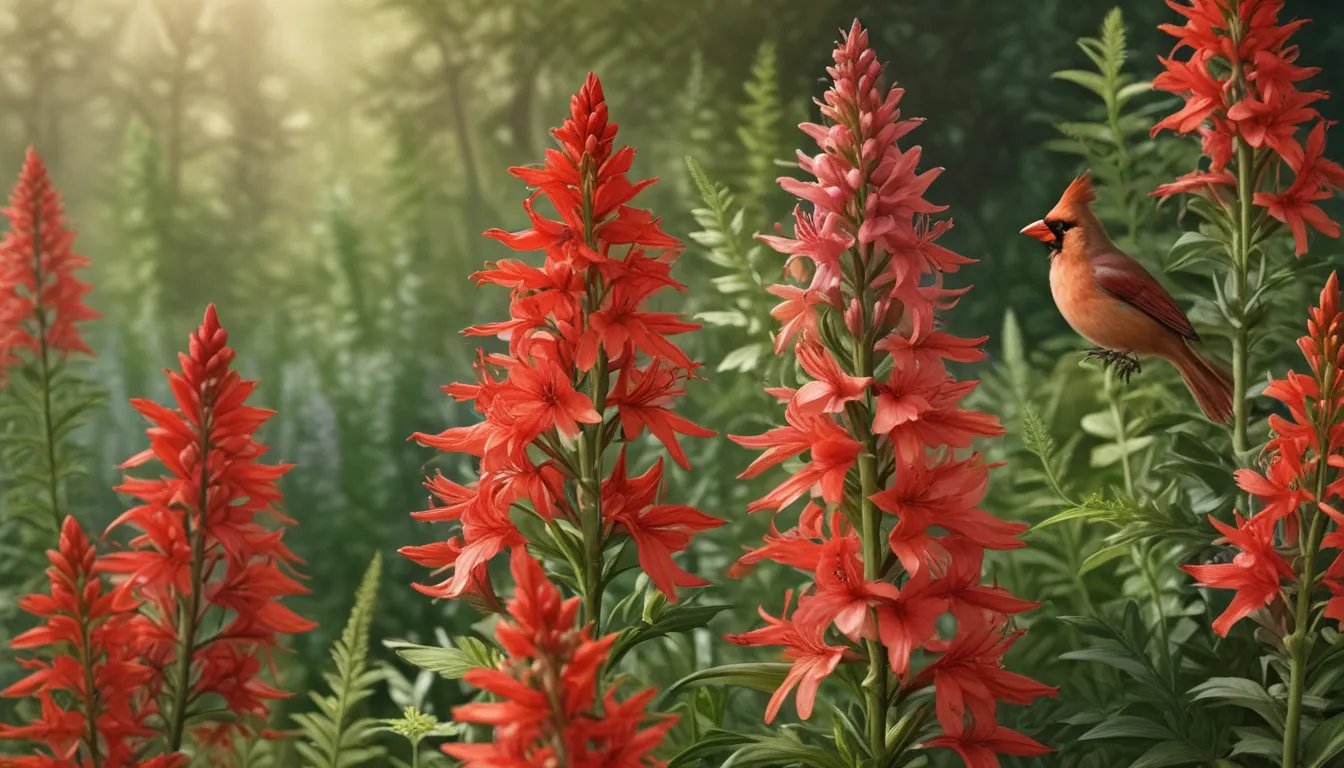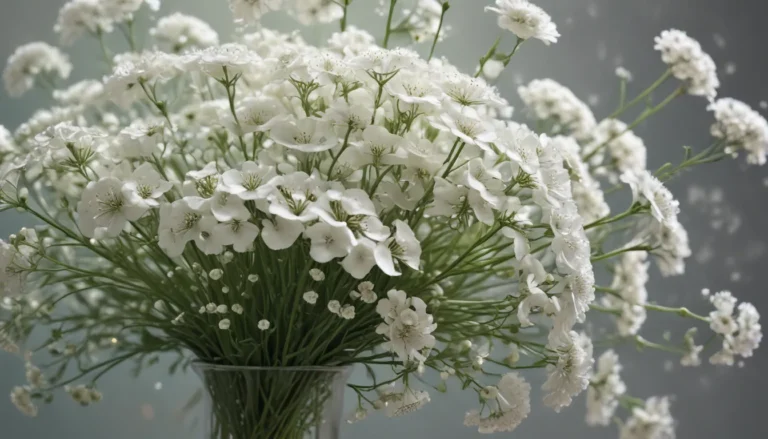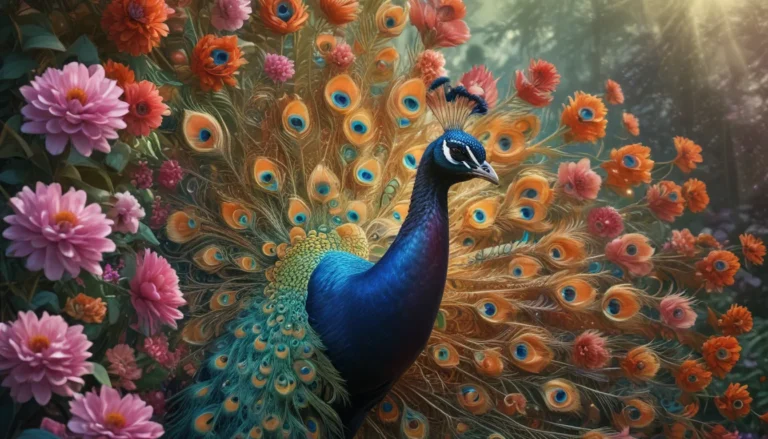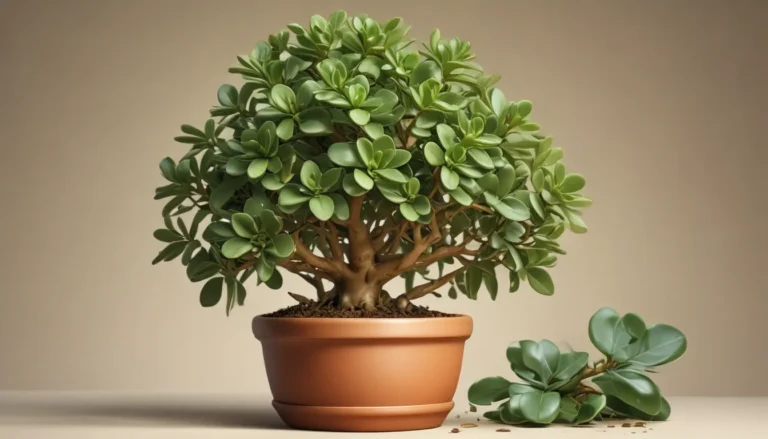The pictures we use in our articles might not show exactly what the words say. We choose these pictures to make you interested in reading more. The pictures work together with the words but don’t take their place. The words still tell you the important facts.
Welcome to the vibrant world of cardinal flower, a stunning perennial plant known for its scarlet red blooms and its ability to attract hummingbirds and butterflies. In this article, we will delve into 18 fascinating facts about cardinal flower that will not only captivate your interest but also deepen your understanding of this remarkable plant. From its medicinal uses by Native Americans to its role in supporting local ecosystems, cardinal flower is a plant full of surprises waiting to be discovered.
The Cardinal Flower: A Symbol of Vibrancy
Inspired by the bright red plumage of a male cardinal bird, the cardinal flower stands out in any garden with its striking color, making it an irresistible draw for both humans and pollinators alike.
Nurtured by Native Habitats
Native to the wetlands of North America, the cardinal flower thrives in moist conditions, making it an ideal choice for rain gardens and water features.
Reaching New Heights
Standing tall at heights of 2-4 feet, the cardinal flower adds a dramatic vertical element to any garden landscape, commanding attention with its majestic presence.
A Magnet for Hummingbirds
With its nectar-rich flowers and tubular shape, the cardinal flower is a favorite of hummingbirds, inviting these tiny, iridescent visitors to sip on its sweet rewards.
Blooms That Last
The cardinal flower's blooming season stretches from late summer to early fall, offering a burst of color when many other plants are winding down, making it a standout in any garden.
Rooted in Resilience
Equipped with a robust root system, the cardinal flower thrives in wet soil conditions, making it an effective choice for erosion control and a resilient addition to any garden.
Traditional Medicine
Recognized for its medicinal properties by Native American tribes, the cardinal flower was used to treat respiratory issues, fever, and digestive problems, showcasing its rich history of healing.
A Haven for Butterflies
In addition to hummingbirds, the cardinal flower also attracts a variety of butterfly species, infusing even more beauty and vitality into your garden.
Embracing Moisture
While the cardinal flower flourishes in wet conditions, it requires consistent moisture to thrive and is not tolerant of drought, emphasizing the importance of proper care.
A Gardener’s Delight
Despite its stunning appearance, the cardinal flower is relatively easy to grow, making it a popular choice for both novice and experienced gardeners seeking an impressive yet manageable plant.
Versatility Redefined
Whether used as a border plant, in a water garden, or as a focal point in a wildflower meadow, the cardinal flower adds elegance and drama to any landscape, showcasing its versatility.
Buzzing with Bees
Not only alluring to hummingbirds and butterflies, the cardinal flower is also a beacon for bees, making it an essential addition to pollinator-friendly gardens.
Perennial Pleasure
With proper care, the cardinal flower can grace your garden for several years, offering vibrant blooms season after season and becoming a cherished perennial companion.
Preserving Native Beauty
As a native plant, the cardinal flower contributes to local ecosystems, supporting biodiversity and enhancing the environmental health of its surroundings.
Blossoming Bouquets
The cardinal flower's vivid red blooms make it a sought-after choice for cut flower arrangements, injecting a bold splash of color into any bouquet and adding a touch of nature's beauty.
Contrasting Blooms
When paired with plants boasting contrasting foliage colors like hostas or ferns, the cardinal flower's red blooms create a captivating contrast in the garden, elevating its visual appeal.
Thriving in Naturalized Spaces
Adaptable to naturalized areas, the cardinal flower flourishes in wild spaces, lending a burst of color and attracting wildlife, enriching the biodiversity of these untamed environments.
A Vision for Photographers
Nature photographers are drawn to the cardinal flower's vibrant hues and delicate structure, capturing its beauty in stunning images that showcase its allure and grace.
In conclusion, the cardinal flower stands out as a captivating and dynamic plant that enchants with its vibrant blooms, beckons a multitude of pollinators, and offers a myriad of benefits to both the garden and the environment. By incorporating this striking perennial into your landscape, you not only enhance its natural beauty but also embark on a journey of endless fascination as you witness the many enchanting qualities of the cardinal flower.
Conclusion
Unveiling the Cardinal Flower, a plant that mesmerizes gardeners and nature enthusiasts with its vivid red flowers and unique attributes. From attracting hummingbirds and butterflies to its traditional herbal medicine uses, the Cardinal Flower is a remarkable addition to any garden or natural habitat, enriching the landscape with its stunning blooms, versatility, and longevity.
Whether you seek to infuse your garden with color or support local wildlife, the Cardinal Flower is a delightful choice. Its beauty, resilience, and adaptability make it an attractive option for gardeners of all experience levels, offering a glimpse into the wonders of nature with every vibrant bloom.
So, take a moment to marvel at the majesty of the Cardinal Flower, a native plant that embodies the marvels of the natural world.
FAQs
Q: How tall do Cardinal Flowers typically grow?
A: Cardinal Flowers can reach heights of 2 to 5 feet, making them an impressive addition to any garden or landscape.
Q: Are Cardinal Flowers easy to grow?
A: While Cardinal Flowers require specific conditions like moist soil and partial shade, they are relatively easy to grow with care and attention.
Q: Can Cardinal Flowers attract pollinators?
A: Yes, Cardinal Flowers are known for attracting hummingbirds and butterflies, making them an excellent choice for pollinator-friendly gardens.
Q: Are Cardinal Flowers invasive?
A: No, Cardinal Flowers are native to North America and do not pose invasive threats, playing a vital role in supporting local ecosystems.
Q: Can Cardinal Flowers be grown in containers?
A: Yes, Cardinal Flowers can thrive in containers with ample space and proper drainage to support their growth.
Q: Are Cardinal Flowers poisonous?
A: Cardinal Flowers are generally not toxic to humans, but caution should be exercised to keep them away from pets and children out of safety concerns.






